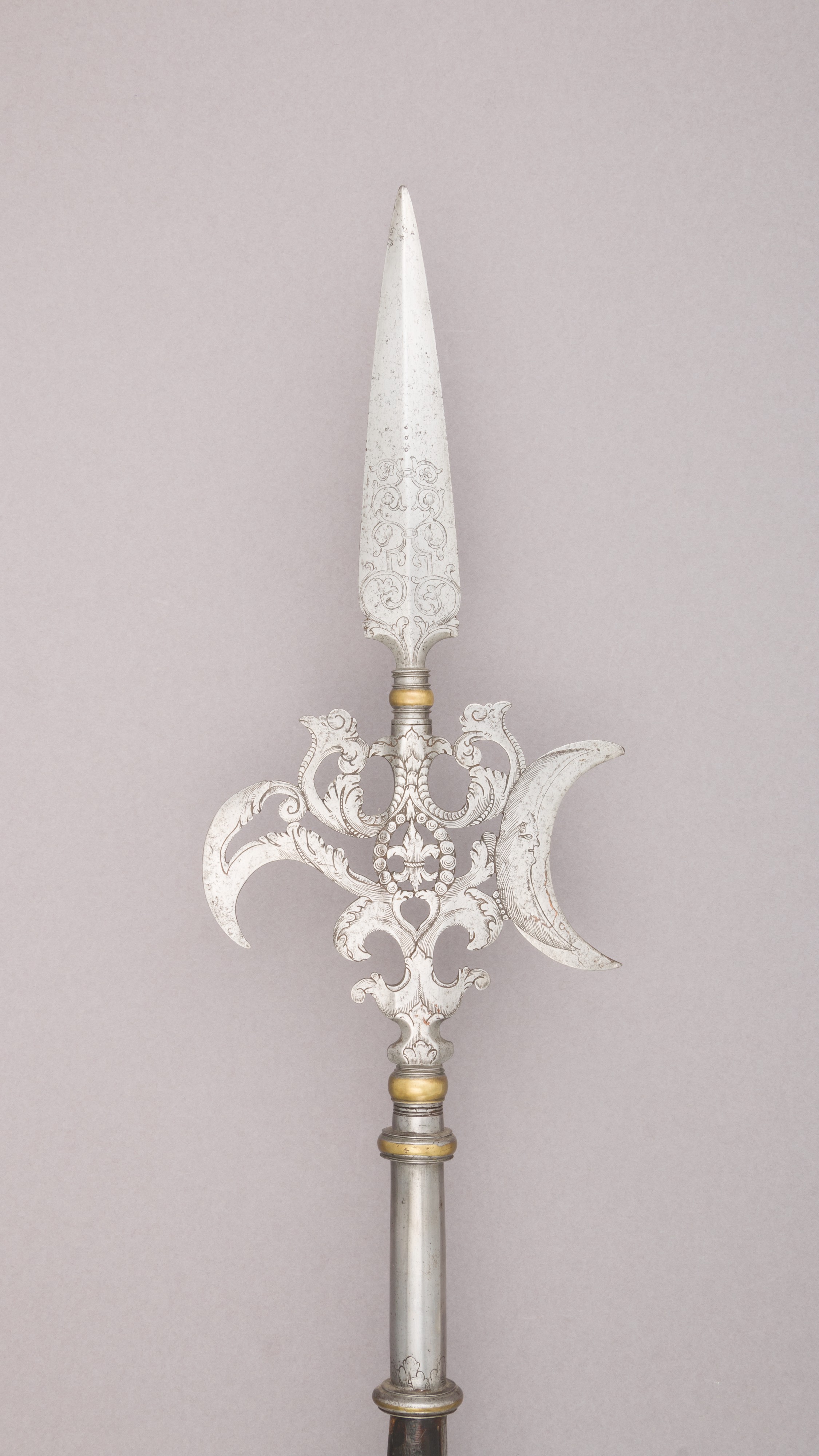Halberd
Not on view
The elaborately pierced body of the halberd head consists of symmetrical floral scrolls, with a fleur-de-lis in its center; one side has a concave axe blade engraved with a crescent moon, and on the opposite side a sharply down-turned beak. A narrow spear blade is attached at the apex by ring moldings, the center ring inlaid with brass, and is also engraved with foliate scrolls. The tubular socket is attached to the blade by ring moldings, two near the upper end, one at the base, the larger two rings inlaid with brass. The shaft of wood is studded with nails and painted black overall, and it terminates in an iron cone.
The stout fighting halberd of the Swiss (see acc. no. 14.25.51) was transformed in the sixteenth century into the ceremonial weapon of palace guards throughougt Europe, and by the seventeenth century had been adopted by the military as a symbolic weapon of rank for sergeants. This halberd may have been carried by a sergeant, but the quality of its delicately pierced and engraved design suggest that it was a specially made piece rather than one of common military issue. Decoratively pierced and engraved halberds were also carried by noncommissioned officers in colonial America, the American-made halberds being copied after European examples of this type.
The heavy foliate scrolls that decorate this piece reflect the seventeenth-century baroque taste, and the foliated strapwork on the spear blade recalls the ornament of Jean Bérain the Elder (1637–1711). The general lightness and delicacy of the decoration, but without a hint of the rococo, suggest a slightly later dating, perhaps to the first quarter of the eighteenth century.
Due to rights restrictions, this image cannot be enlarged, viewed at full screen, or downloaded.
This artwork is meant to be viewed from right to left. Scroll left to view more.




